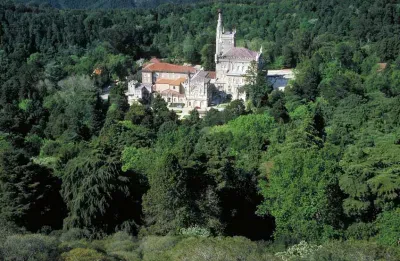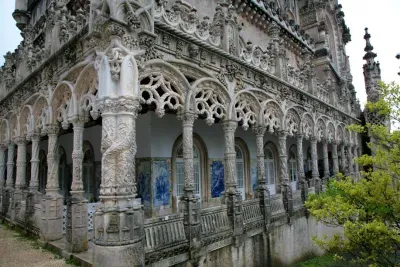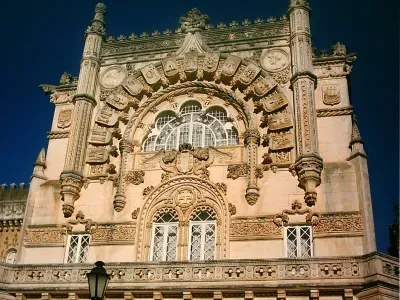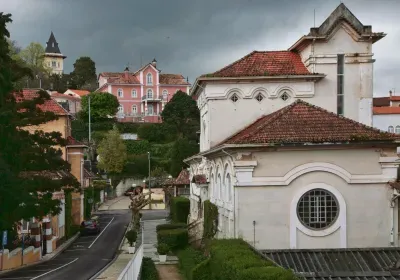
Palace Hotel of Buçaco 
Buçaco Palace from the air 
Palacio do Buçaco Detail 
Palace of Bussaco 
Manueline details 
Bucaco Palace Azulejos Palace Hotel of Bussaco
Despite its appearance, the Palace do Buçaco is not actually a contemporary of Portugal's other Manueline style masterpieces. Set on a hill top in the National Forest of Buçaco work on building the palace only began in 1888.
The site of the palace was an old Carmelite convent and it was intended to be used as a residence for Queen Maria Pia, wife of King Luís I. However, shortly after its completion in 1907 Portugal became a republic and the palace was handed over to the state. At this time the decision was made to turn the palace into a luxury hotel and it remains so to this day.
The Palace at Bussaco takes its style cues from the great buildings of the Age of the Discoveries such as the Belém Tower and the Jeronimos monastery. The Neo-Manueline design was largely the work of Italian architect Luigi Manini and many similarities are apparent with his other well known work, the Quinta da Regaleira in Sintra. Restrained it is not; there are intricate carvings on practically every available surface (inside and out), stucco faux-vaulted ceilings and some very fine azulejo work, the most notable of which depicts the Battle of Bussaco.
The grounds of the palace are meticulously landscaped and also incorporate the small Carmelite Convent of Santa Cruz, which is worth having a look at for the curious collection of wax figures left by worshippers, if nothing else.
Address
Mata do BussacoMealhadaLuso3050-261Phone
+351 231 937 970Link
http://www.bussacopalace.com/Attraction type

Luso travel guide »
This small town just north of Coimbra is famous for one thing in particular: water. Agua de Luso is synonymous with good quality mineral water in Portugal, and thousands of bottles of this precious liquid are consumed daily across the nation. It flows freely from fountains and springs in the town and is also renowned for its healing qualities, hence the fact that Luso is one of Portugal’s most…